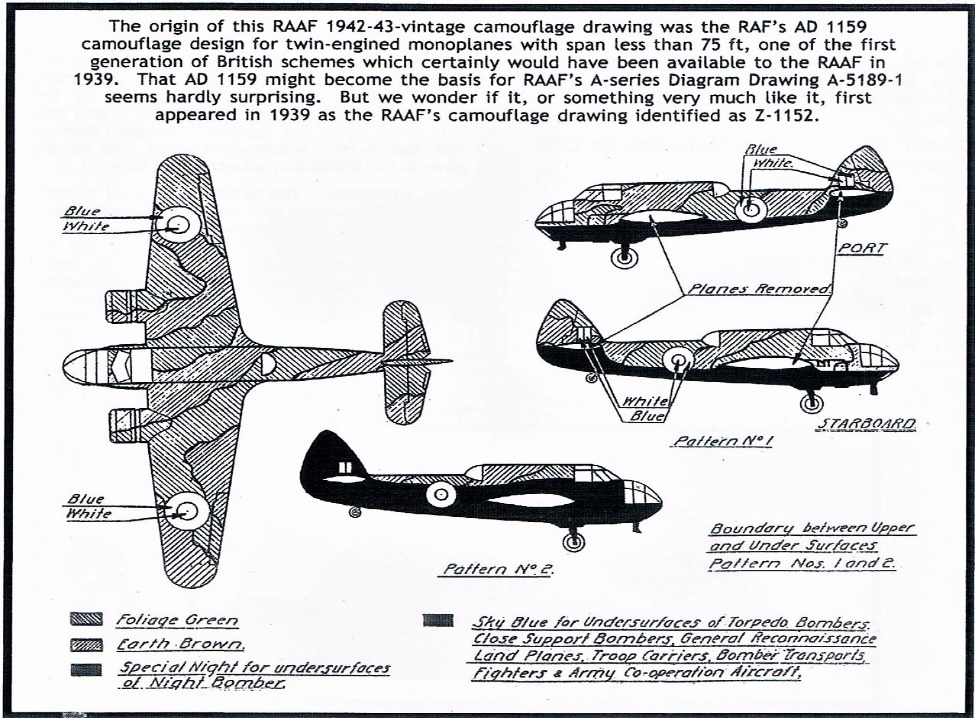
Based on what can be seen of the camouflage pattern applied to HK822 (see Photos below), the pattern appears to be based on the RAF's AD 1159 camouflage design for twin engine aircraft with a wingspan of less than 75 feet.
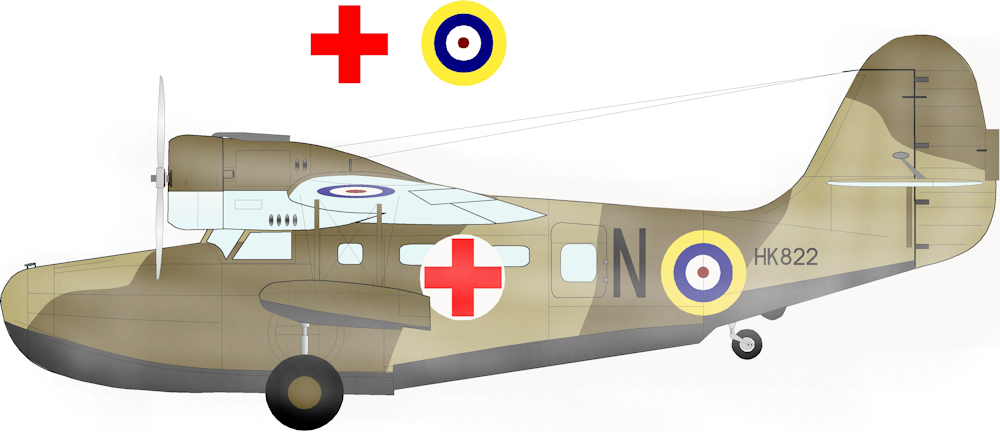
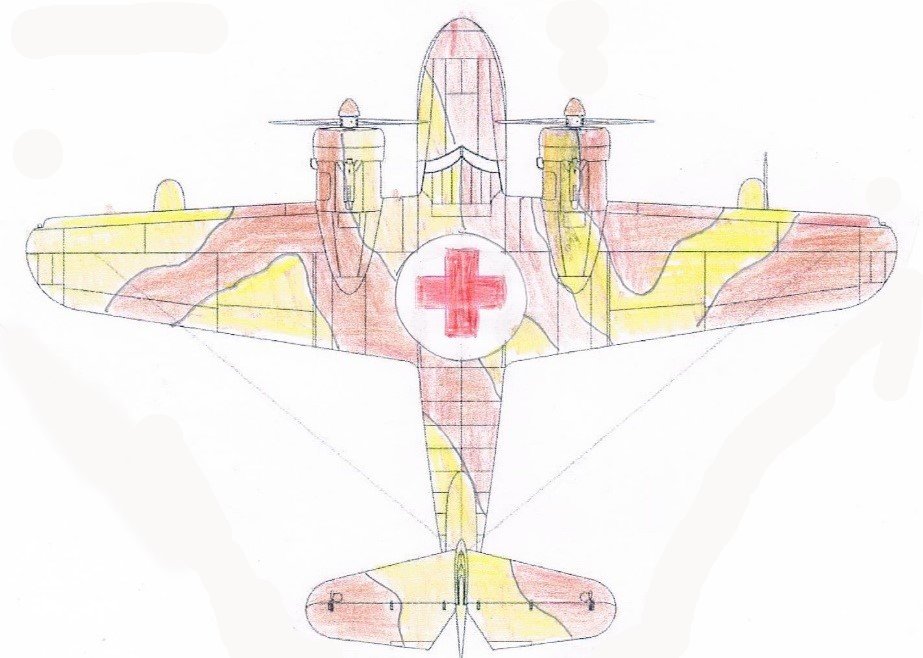
Camouflage Colours - Grumman Goose HK822 was finished in the standard RAF Desert Camouflage colours of Dark Earth and Middle Stone upper and fuselage surfaces and Azure Blue under surfaces with Black under the keel and floats (a holdover from it's original British American Ambulance Corps colours). The pattern, as applied to the Goose, is shown in the above drawings of the upper surfaces and port profile.
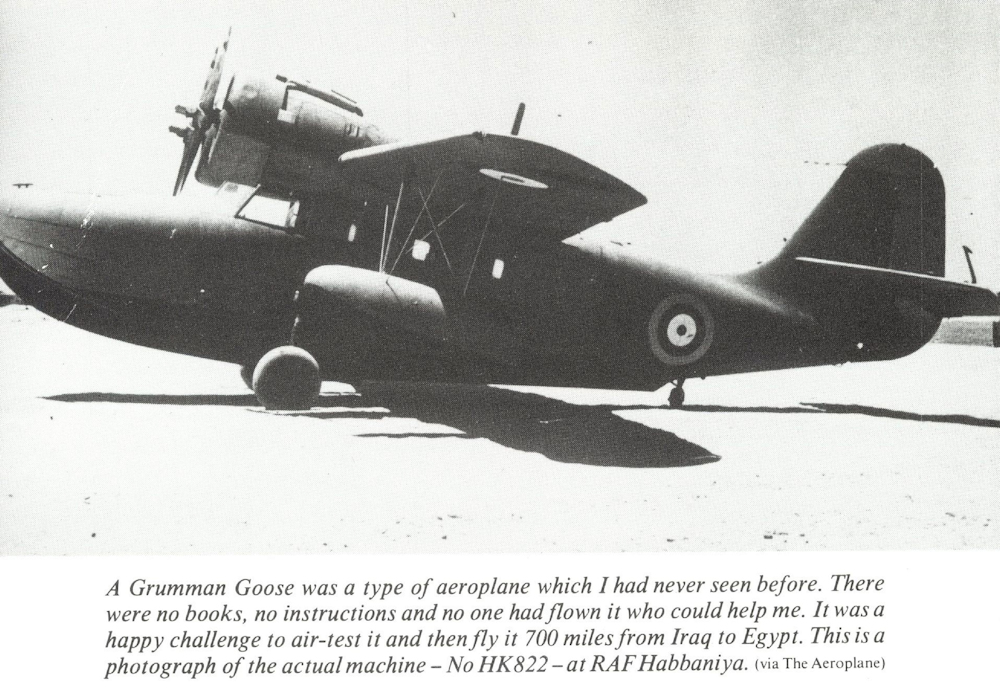
Wing Roundels and Fin Stripes - Unusually, from the photographic evidence, HK822 does not appear to have carried upper wing roundels nor fin stripes; it did however have fuselage and under wing roundels (see photographs above and below).
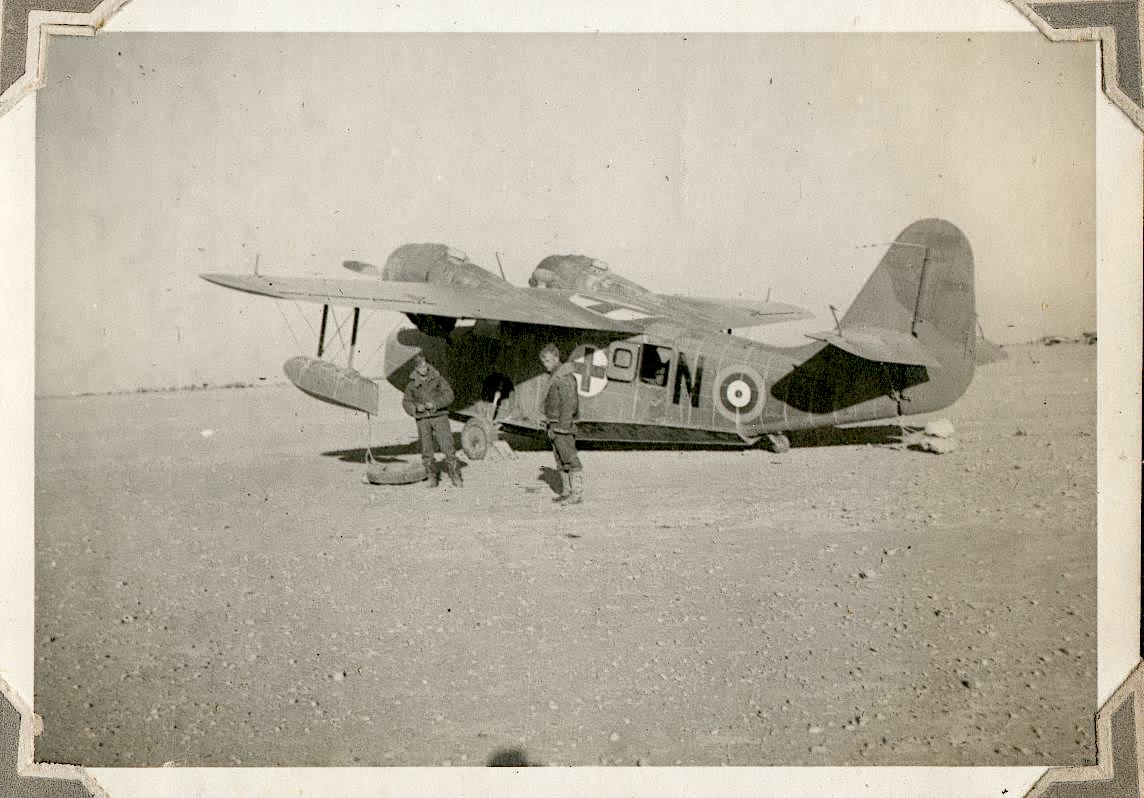
Grumman Goose HK822 coded 'N', Habbaniya, Sea Rescue Flight, Desert Air Force prior to passing to 1 AAU, RAAF (Britmodeller Forums).
Fuselage Roundels - Type A.1 roundels (ratio 1:3:5:7) were carried on HK822 either side of the fuselage and Type A (ratio 1:3:5) under the wings, while Red Crosses in White discs (Ambulance markings) were carried on the upper wing centre section and the fuselage sides forward of the roundels. The code letter 'N' and the serial HK822 were Black.
Interior - In the absence of photographic or documented evidence, the interior of the Goose was probably Grumman Grey (roughly equivalent to FS 36440 Light Gull Grey) in the cabin and Chromate Green in the cockpit (Interior Green as such didn't appear until late 1942 early 1943) with Black instrument panel. Since the Goose was essentially a civilian aircraft adopted for military use, it is possible that the cockpit was also Grumman Grey, so it's up to the modeller to decide on which finish to utilise. The anti-slip floor of the cabin was probably Black.
Wheel Wells - The interior of the main wheel wells would have been the exterior camouflage colour, in the case of HK822, Dark Earth.
Seats - Based on civilian interiors, the seats, if installed, were probably Dark Brown leather. We know that when it crashed it was carrying five (5) passengers in addition to the two pilots, so one would assume seats were installed at that stage.
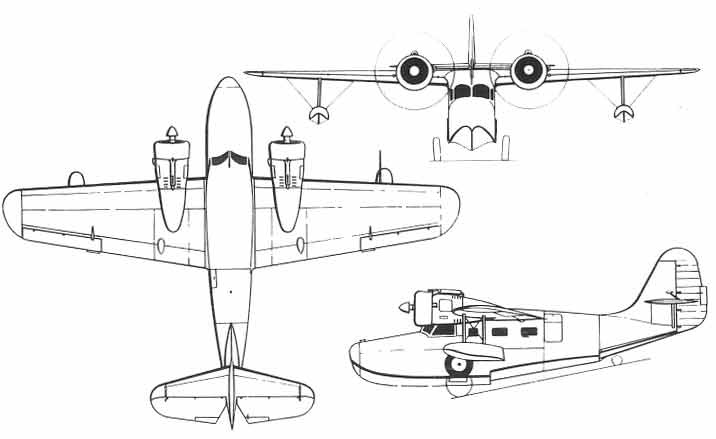
Acknowledgement:
1. Steve MacKenzie for his assistance and artwork as Editor of 'In Miniature' in the development of this article.

